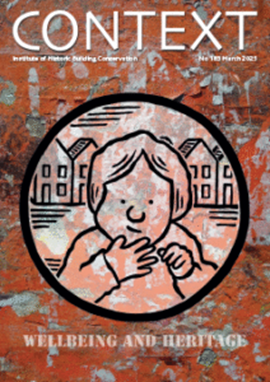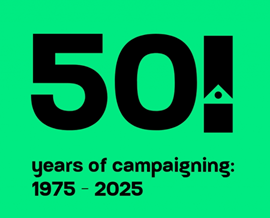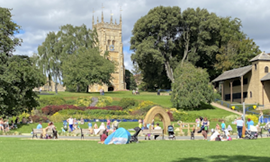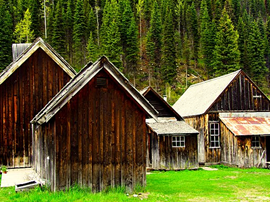The maintenance challenge of urban housing in Scotland
Apart from health and safety risks associated with falling masonry from tenements, any energy efficiency measures are pointless if the building is not in a good state of repair.
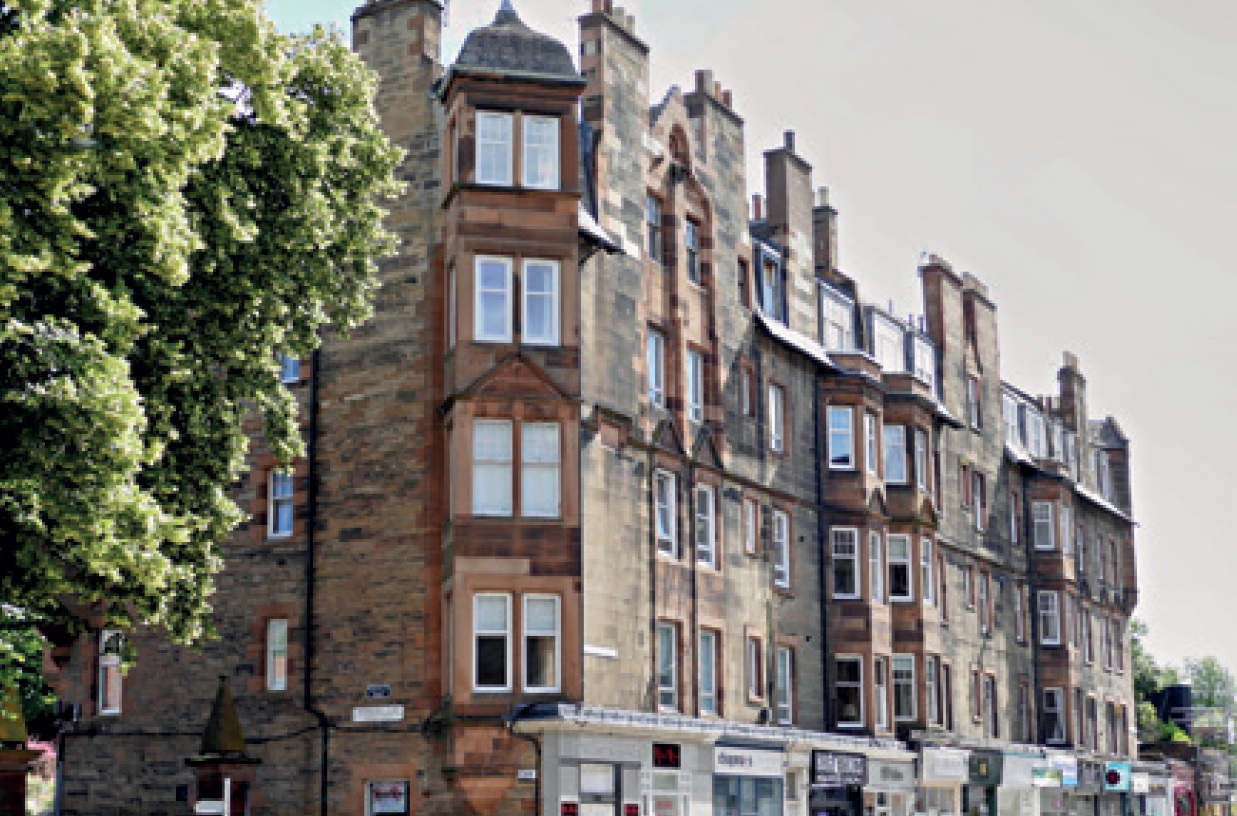
|
| These late-19th century, red-and buff- sandstone tenements in Edinburgh, inspired by Patrick Geddes, are notable for having access from the back instead of through doors between shops. The block is in the Coltbridge and Wester Coates Conservation Area: despite that, the window alterations are dreadful. |
‘The tenement is the traditional form of urban housing in Scotland and it found its highest expression during the nineteenth century in Glasgow, in the great period of industrial expansion. Glasgow is a city of tenements.’ So wrote Frank Worsdall in his 1979 book The Tenement: a way of life. At a time when large areas of the city had been demolished, his aim was to record the excellence of ‘the long street-vistas’ of tenement housing and the life they represented. His study, which ends in 1975, does not mention the work of the community-based housing associations which were established in the early 1970s, spearheading a different approach, of tenement rehabilitation rather than comprehensive redevelopment.
There are different systems of land law in the Scots and English legal systems. Historically Scotland had a system of feudal land ownership. All land was ultimately held by the Crown and the ‘owner’ was not the ultimate ‘owner’ but a ‘vassal’. The grantor of each feudal right was called the superior and the grantee the vassal or feuar. This enabled the feudal superior to retain control over the use of the land and receive annual payments known as feu duty. This system was abolished in 2004 by the Abolition of Feudal Tenure (Scotland) Act 2000. The current proprietor became the outright owner and feu duty was abolished.
The term ‘tenement’ originally referred to land and the dwelling-house erected on it. By the nineteenth century it was used with reference to a specific type of building – a domestic building of more than one storey where the houses (ie flats) are reached by a common entrance and stair. While the word ‘tenement’ conjures up images of the Victorian tenements of Scottish cities, a tenement is defined in the Tenements (Scotland) Act 2004 as ‘a building or part of a building which comprises at least two related flats which are, or are designed to be, in separate ownership and are divided from each other horizontally.’ A tenement can include both commercial and residential properties, and the ownership can be complex, including owner occupiers, social landlords, private landlords and so on.
In Scotland there are around 895,000 properties legally defined as tenements. Of these around a third were built before 1919, another third between 1919 and 1982, and the remaining third after 1982. A key finding of the Scottish House Condition Survey 2022 was that 49 per cent showed disrepair to critical elements which are central to weathertightness, structural stability and preventing deterioration of the property. This is a similar level to 2016 (48 per cent) and an improvement on 2019, when 52 per cent of dwellings had disrepair to critical elements.
In Edinburgh Old Town a number of substantial original townhouses, such as Riddle’s Court, survive. But by the middle of the seventeenth century buildings were built higher within the city walls, and the tenement built of stone with slate roofs had become the standard form of housing. Buildings followed the vernacular architectural tradition, for example 343–363 High Street and 2–8 Advocates Close, dating from 1735. In the nineteenth century when areas of the Old Town were rebuilt as part of slum clearance programmes, the Scottish baronial style was adopted. In his magisterial book The Making of Classical Edinburgh (1966), AJ Youngson describes a series of acts passed by the town council after James Craig’s Plan for the New Town was adopted in 1767.
The first act of 1767 required pavements to be ten feet wide and houses to be built along a continuous line. Later acts had clauses which required a plan and elevation of the intended building to be approved by a committee of council before the feu was granted. Restrictions were imposed on height and the number of storeys. Only skylights were allowed in the front of the roof. This act of 1785 applied to development west of Hanover Street; that to the east had been subject to the general controls of 1767. The system in many ways operated like a private planning system but it was not always effective as dormer windows became a feature of many roofs.
There has been a growing concern that tenements are not being properly maintained. In Scotland there have been a number of initiatives led by local authorities, city heritage trusts and others to address maintenance issues. But we now have a situation where new housing and older housing owned by social landlords is maintained to a higher standard than that owned by private owners, whether owner occupied or rented. As part of the Royal Incorporation of Architects in Scotland (RIAS) Festival of Architecture 2016, the website Under One Roof was launched to offer independent advice. This was a development of The Tenement Handbook: a practical guide to living in a tenement (1993) by John Gilbert and Ann Flint. The website www.underoneroof.scot is now run by its own charity, known as Under One Roof, and offers advice on building maintenance, tenement management and retrofit.
In a letter about grants, written in 2015 to Historic Scotland (now Historic Environment Scotland, HES), the RIAS wrote: ‘We think there is scope for HES encouraging and demonstrating support for tenement repairs. A campaign for tenement repairs meets the green agenda. The aphorism ‘the greenest building is the building you already have’ (Carl Elefante) is true. This would also help stimulate economic activity, encourage the traditional skills agenda and help with the employment of apprentices. The scheme could require tenement owners to form an owners’ association (Edinburgh World Heritage’s model is suitable) and commission a suitably qualified professional team to report on the condition of the building and identify the likely cost of repairs.’ HES provided some financial support for the Under One Roof website and later supported an INFORM guide on Tenement Maintenance.
The inaugural meeting of the Scottish Parliamentary Working Group on Tenement Maintenance took place in March 2018. This was a cross-party initiative in response to a debate in the Scottish Parliament in January 2018 on the maintenance of tenement communal property and the challenges of getting common repairs carried out. The working group consisted of a number of MSPs and various individuals and organisations with expertise in property management and maintenance. In its final recommendations report in June 2019 the working group set out three primary recommendations for reforming the law of the tenement in order to improve matters:
1. A requirement for tenements to be subject to a building condition inspection every five years
2. The establishment of compulsory owners’ associations
3. The establishment of building reserve funds. The working group described some key features of the proposed owners’ associations:
- The association would have legal personality which would allow it, among other things, to enter into contracts; this would offer greater protection for owners who might otherwise be held individually responsible for the whole group’s debts.
- The association would be required to hold an annual meeting, which would prevent absent or apathetic owners holding up repairs.
- The association would have the ability to control an annual repair plan and budget.
- The association would be empowered to delegate certain rights and responsibilities, including the right to pursue non-paying owners, to a manager.
Given the complex policy and legal issues connected to the introduction of owners’ associations (notably around the interaction of any proposed legislation with existing property titles and human rights concerns), the working group recommended that the matter be referred to the Scottish Law Commission for further consideration and development.
The Scottish Law Commission (SLC) published a discussion paper in April 2024, setting out its provisional proposals for the introduction of owners’ associations. It suggests new legislative provision for the creation and enforcement of an owners’ association in every tenement. It also consults on the introduction of a new default management scheme, named the Owners’ Association Scheme, intended to replace the Tenement Management Scheme currently set out in the first schedule to the Tenements (Scotland) Act 2004. The paper seeks views on these proposals and a number of related questions. The responses to the consultation will be drawn on in a report accompanied by a draft bill with recommendations in the form of legislation to the Scottish Government.
The SLC report and draft bill are expected in 2026. The working group of MSPs and representatives of organisations with expertise in property management and maintenance is continuing to develop proposals for the other recommendations. The overall ambition remains to bring Scotland’s tenements to an improved state of repair, if not on to a plateau of good repair. Apart from health and safety risks associated with falling masonry, any energy efficiency measures are pointless if the building is not in a good state of repair.
For further information on the project, see www.scotlawcom.gov.uk/law-reform/lawreform-projects/tenement-law-compulsory-ownersassociations/. See also Built Environment Forum Scotland on tenement maintenance and the working groups: www.befs.org.uk/policytopics/buildingsmaintenance-2/
This article originally appeared in the Institute of Historic Building Conservation’s (IHBC’s) Context 181, published in September 2024. It was written by Jocelyn Cunliffe, an advanced accredited conservation architect. She represented the RIAS on the Scottish Parliamentary Working Group on Tenement Maintenance, chairs the RIAS Conservation Committee and is a trustee of Under One Roof.
--Institute of Historic Building Conservation
Related articles on Designing Buildings Conservation.
- 14 Henrietta Street Museum.
- Conservation.
- Conservative surgery in Edinburgh.
- Heritage.
- Historic environment.
- IHBC articles.
- Institute of Historic Building Conservation.
- Tenement close.
- Tenement Management Scheme.
- Tenement.
- Tenements (Scotland) Act 2004.
- The New Tenement: residences in the inner city since 1970.
- Title Conditions (Scotland) Act 2003.
IHBC NewsBlog
IHBC Context 183 Wellbeing and Heritage published
The issue explores issues at the intersection of heritage and wellbeing.
SAVE celebrates 50 years of campaigning 1975-2025
SAVE Britain’s Heritage has announced events across the country to celebrate bringing new life to remarkable buildings.
IHBC Annual School 2025 - Shrewsbury 12-14 June
Themed Heritage in Context – Value: Plan: Change, join in-person or online.
200th Anniversary Celebration of the Modern Railway Planned
The Stockton & Darlington Railway opened on September 27, 1825.
Competence Framework Launched for Sustainability in the Built Environment
The Construction Industry Council (CIC) and the Edge have jointly published the framework.
Historic England Launches Wellbeing Strategy for Heritage
Whether through visiting, volunteering, learning or creative practice, engaging with heritage can strengthen confidence, resilience, hope and social connections.
National Trust for Canada’s Review of 2024
Great Saves & Worst Losses Highlighted
IHBC's SelfStarter Website Undergoes Refresh
New updates and resources for emerging conservation professionals.
‘Behind the Scenes’ podcast on St. Pauls Cathedral Published
Experience the inside track on one of the world’s best known places of worship and visitor attractions.
National Audit Office (NAO) says Government building maintenance backlog is at least £49 billion
The public spending watchdog will need to consider the best way to manage its assets to bring property condition to a satisfactory level.







